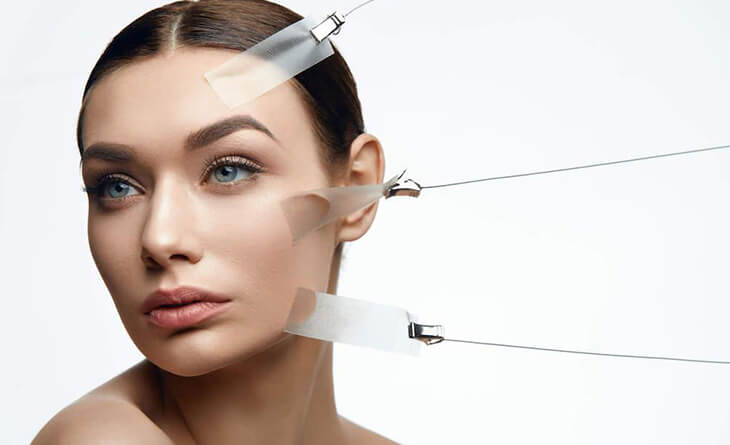When you meet friends and family after a while, you may hear things like, “Are you OK, you are looking older than when we last met”. Hearing this from loved ones makes us look at ourselves again and wonder.
We truly start ageing right from the time of our birth. Each cell and tissue ages resulting in changes we see externally, first very slowly as we grow, then more rapidly as we age. Owing to loss of skin elasticity and firmness and often loss of the underlying fat, the features of aging usually start setting in after the age of 40.
Factors like stress, nutritional deficiencies and co-morbid conditions may hasten this process in certain individuals. Sagging, bulges and folds around the eyes can make the eyes look old and tired. Descent of the tissues of the cheeks make the smile lines more prominent, reduces the definition of the jawline and appearance of jowls.
Facelift surgery done by a qualified Aesthetic Plastic Surgeon can enable you to get back a more youthful appearance and take away years from your countenance.

Am I a candidate for this procedure?
Irrespective of age or individual concerns, the ideal candidate for a facelift is one who is genuinely motivated to rejuvenate his/her appearance and has realistic expectations.
Your Aesthetic surgeon will listen to your concerns during consultation,assess your face in detail and will then suggest a procedure that 1) is individualized for you based on YOUR ageing changes, 2) will meet your expectations, 3) is safe for you and 4) will give you a durable long lasting result. There are also several non-surgical modalities currently available which may be alternatives to a surgical facelift but without the same durability or striking result. Except in younger patients with early changes of ageing and those that do not want to go through surgery, these are better as adjuncts to the surgery and not a replacement.
The person wanting the procedure should be medically fit. You should not be suffering from any life-threatening systemic illness or medical conditions. Any co-morbid conditions such as diabetes and high blood pressure should be well controlled. If you are on blood thinners, they should have been stopped for at least 5-7 days prior to surgery, after consultation with your physician / cardiologist. Chronic smokers HAVE TO stop smoking for a minimum of 2 weeks before the procedure. There are certain herbal medications and nutritional supplements such as ginseng, green tea, gingko balboa, garlic pearls which can also cause increased bleeding during surgery and need to be stopped at least a week prior to the procedure. Patients with coronary heart disease and those who have undergone bypass surgery or stenting must be certified fit by their cardiologists to undergo surgery of 4-5 hours under anaesthesia. Even after the procedure, strict blood pressure control is mandatory and blood thinners can only be restarted after 5-7 days. Resumption of smoking can lead to potentially serious complications and is best avoided for several weeks.
General information about the procedure
Anaesthesia for comprehensive facelifts is usually in the form of General anaesthesia. More limited procedures can be carried out under Local Anaesthesia with sedation.
A comprehensive facelift involves a skin incision extending from the hairline on the side of the head, behind the sideburns downwards just in front of the ear, curving around the earlobe behind the ear and ending in the posterior hairline. Most of this incision lies hidden within natural skin folds. Once the skin is lifted, the underlying tissues of the face and neck (known as the SMAS layer) are pulled upwards and obliquely and fixed. Any excess may be cut or suspended with surgical threads. The skin is then re-draped, excess skin trimmed off and meticulously stitched without tension.
Short scar facelift techniques cater to younger individuals or those with early changes of ageing who have less laxity in the cheeks and jawline and none in the neck. In these cases, the incision is limited to only the front of the ear.
Facelifts may sometimes be combined with other procedures. The most common are brow lifts for drooping eyebrows and eyelids rejuvenation (blepharoplasty). Often Fat Transfers (using fat harvested from your own body) to replace the lost underlying facial fat (microfat) and treat superficial wrinkles (nanofat) are also done at the same time to give a comprehensive facial rejuvenation.
What kind of results can be expected?
Since this surgery aims to correct the process of facial ageing, the result that can be expected in the hands of a qualified Aesthetic Surgeon is a face that looks younger by at least 5-7 years. Fat Transfers help to restore lost volume and the natural contours of the face. This rejuvenation can be expected to last for 5-7 years depending on the patient’s age, stress factors persisting after surgery and possibility of accelerated ageing with time.
Swelling and bruising occur in all patients after facelifts and last for 2-3 weeks. Depending on the ancillary procedures performed, patients will look reasonably acceptable after 1 week, good with makeup after 2 weeks and able to attend social functions after 3 weeks. Occasionally there may be prolonged bruising that may limit activity for a longer period of time. Scars continuously improve with time and are nearly invisible after 6 months to 1 year.

What can go wrong and how is it remedied?
Despite rigorous and meticulous attention to detail, complications can occur. Bleeding within the tissues or hematoma (blood clots under the skin) is the commonest major complication seen with facelift surgeries. It could be a minor bleeding which can be treated conservatively or a major one within 24-48 hours of surgery which may require emergency surgery for removal of the clot. Haematomas are commonly related to uncontrolled blood pressure or blood thinners. Skin flap necrosis (blackening) may occur following a hematoma or excessive tension on the skin while taking stitches. Most common site is behind the ear but it may also occur in front of the ear. Smoking is a major risk factor for this complication. The treatment is usual by regular dressings till healing takes place. Numbness over the face and neck is expected after facelift surgery, is usually temporary and recovers over a few weeks. Rarely Facial Nerve injury affecting the movement of fine muscles of facial expression may be seen, causing drooping of the corner of the mouth on one side and asymmetry while smiling. This is usually temporary and recovers in a few weeks to a couple of months. Widening or thickening of scars may occur in some cases.
Common post op do’s and dont’s
Hospital stay after face lift surgery is usually 24-48 hours only, for observation. Monitoring and control of blood pressure is important. Early ambulation within the room is recommended.
After discharge, rest for one week avoiding strenuous house chores is advised. A head high position in bed will help reduce the swelling. Medications to reduce swelling, antibiotics and anti-inflammatory drugs will be prescribed. Follow up is usually at 4 days check on the status of skin flaps and at 7 days for removal of stitches.
Any medications which were stopped prior to surgery should not be restarted without your surgeon’s permission. Smoking is strictly prohibited.
